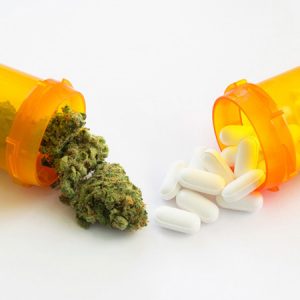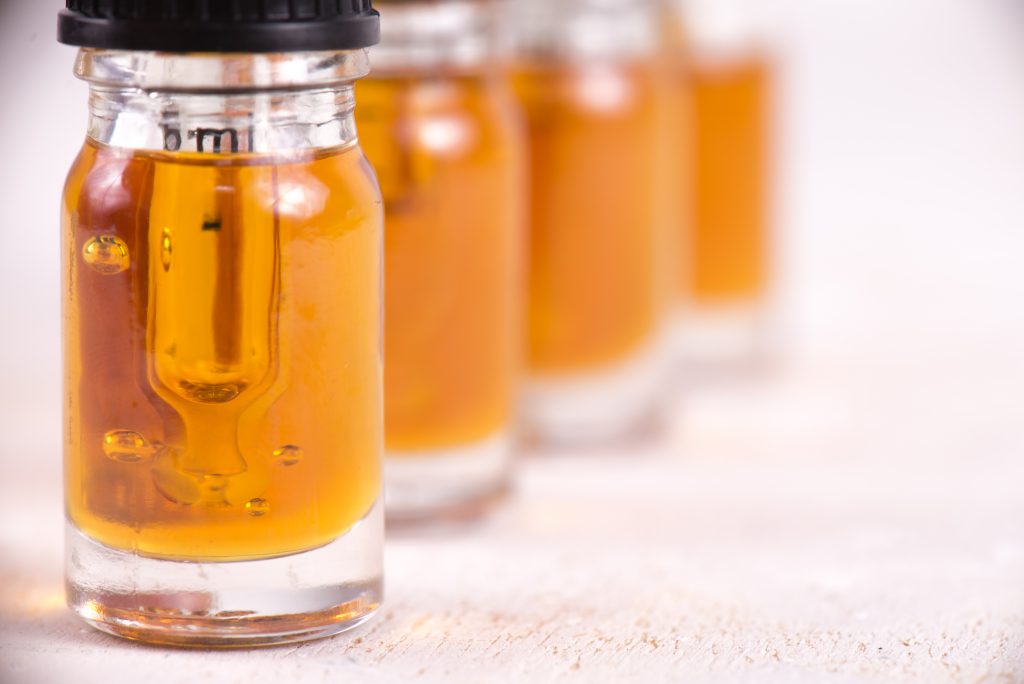
One study examines state implementation of medical and adult-use marijuana laws with opioid prescribing rates and spending among Medicaid enrollees, while a second study examines prescribing patterns for opioids in Medicare Part D and the implementation of state medical cannabis laws.
In general, the physicians interviewed agreed that most studies show that legal cannabis use does result in less opioid use. “When you give people access to cannabis for clinical purposes, at least, they, along with their physicians, seem to react as if it’s medicine,” says David Bradford Ph.D., Busbee Chair in Public Policy in the Department of Public Administration and Policy at the University of Georgia in the podcast below. However, they too agree that policy laws are way ahead of the science and more needs to be done to establish scientific studies and protocols in clinical practice.
From the Podcast:
We asked specifically what is the reaction in terms of dispensed opiates when states turn on active medical cannabis laws. That is either through a dispensary or through some home cultivation. And what we found were large, large responses. And that is, when, particularly when dispensaries were opened in states, we found something on the order of 14% reduction in the use of opiates in Medicare Part D. ~ Dr David Bradford, University of Georgia.
Below is a Podcast Interview with Jason Hockenberry, Ph.D., Emory University, Rollins School of Public Health; David Bradford, Ph.D., Busbee Chair in Public Policy in the Department of Public Administration and Policy at the University of Georgia and Kevin Hill, MD, Director of the Division of Addiction Psychiatry at Beth Israel Deaconess Medical Center and an Assistant Professor of Psychiatry at Harvard Medical School and author of Marijuana: The Unbiased Truth about the World’s Most Popular Weed.
From the Podcast:
Unfortunately, the policy is way out in front of the science. So there is a growing body of evidence, along with these two important new papers that suggest that, again, cannabis may play a role in the opioid crisis. There’s strong pre-clinical research that shows common signaling pathways for both cannabinoids and opioids relative to tolerance, dependence, and addiction. And along with that, you have a lot of anecdotal evidence from patients saying that this can be a helpful way to perhaps reduce the amount of opioids they need.” ~ Dr. Kevin Hill
Association of Medical and Adult-Use Marijuana Laws With Opioid Prescribing for Medicaid Enrollees, Authors Hefei Wen, PhD1; Jason M. Hockenberry, PhD2,3, doi:10.1001/jamainternmed.2018.1007
Abstract Overprescribing of opioids is considered a major driving force behind the opioid epidemic in the United States. Marijuana is one of the potential nonopioid alternatives that can relieve pain at a relatively lower risk of addiction and virtually no risk of overdose. Marijuana liberalization, including medical and adult-use marijuana laws, has made marijuana available to more Americans.
Objective To examine the association of state implementation of medical and adult-use marijuana laws with opioid prescribing rates and spending among Medicaid enrollees.
Design, Setting, and Participants This cross-sectional study used a quasi-experimental difference-in-differences design comparing opioid prescribing trends between states that started to implement medical and adult-use marijuana laws between 2011 and 2016 and the remaining states. This population-based study across the United States included all Medicaid fee-for-service and managed care enrollees, a high-risk population for chronic pain, opioid use disorder, and opioid overdose.
Exposures State implementation of medical and adult-use marijuana laws from 2011 to 2016.
Main Outcomes and Measures Opioid prescribing rate, measured as the number of opioid prescriptions covered by Medicaid on a quarterly, per-1000-Medicaid-enrollee basis.
Results State implementation of medical marijuana laws was associated with a 5.88% lower rate of opioid prescribing (95% CI, −11.55% to approximately −0.21%). Moreover, the implementation of adult-use marijuana laws, which all occurred in states with existing medical marijuana laws, was associated with a 6.38% lower rate of opioid prescribing (95% CI, −12.20% to approximately −0.56%).
Conclusions and Relevance The potential of marijuana liberalization to reduce the use and consequences of prescription opioids among Medicaid enrollees deserves consideration during the policy discussions about marijuana reform and the opioid epidemic.
Association Between US State Medical Cannabis Laws and Opioid Prescribing in the Medicare Part D Population, Authors Ashley C. Bradford, BA1; W. David Bradford, PhD1; Amanda Abraham, PhD1; et al, doi:10.1001/jamainternmed.2018.0266
Importance Opioid-related mortality increased by 15.6% from 2014 to 2015 and increased almost 320% between 2000 and 2015. Recent research finds that the use of all pain medications (opioid and nonopioid collectively) decreases in Medicare Part D and Medicaid populations when states approve medical cannabis laws (MCLs). The association between MCLs and opioid prescriptions is not well understood.
Objective To examine the association between prescribing patterns for opioids in Medicare Part D and the implementation of state MCLs.
Design, Setting, and Participants Longitudinal analysis of the daily doses of opioids filled in Medicare Part D for all opioids as a group and for categories of opioids by state and state-level MCLs from 2010 through 2015. Separate models were estimated first for whether the state had implemented any MCL and second for whether a state had implemented either a dispensary-based or a home cultivation only–based MCL.
Main Outcomes and Measures The primary outcome measure was the total number of daily opioid doses prescribed (in millions) in each US state for all opioids. The secondary analysis examined the association between MCLs separately by opioid class.
Results From 2010 to 2015 there were 23.08 million daily doses of any opioid dispensed per year in the average state under Medicare Part D. Multiple regression analysis results found that patients filled fewer daily doses of any opioid in states with an MCL. The associations between MCLs and any opioid prescribing were statistically significant when we took the type of MCL into account: states with active dispensaries saw 3.742 million fewer daily doses filled (95% CI, −6.289 to −1.194); states with home cultivation only MCLs saw 1.792 million fewer filled daily doses (95% CI, −3.532 to −0.052). Results varied by type of opioid, with statistically significant estimated negative associations observed for hydrocodone and morphine. Hydrocodone use decreased by 2.320 million daily doses (or 17.4%) filled with dispensary-based MCLs (95% CI, −3.782 to −0.859; P = .002) and decreased by 1.256 million daily doses (or 9.4%) filled with home-cultivation–only-based MCLs (95% CI, −2.319 to −0.193; P = .02). Morphine use decreased by 0.361 million daily doses (or 20.7%) filled with dispensary-based MCLs (95% CI, −0.718 to −0.005; P = .047).
Conclusions and Relevance Medical cannabis laws are associated with significant reductions in opioid prescribing in the Medicare Part D population. This finding was particularly strong in states that permit dispensaries, and for reductions in hydrocodone and morphine prescriptions.





